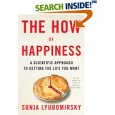In 2004, Martin Seligman told a group of us on a conference call that a specific exercise in which a person expresses gratitude was the single most effective intervention in the budding field of positive psychology, according to the limited research available on these new techniques.
At the University of Pennsylvania, Seligman teaches a course on positive psychology, and has his students plan and carry out a “Gratitude Visit” as an assignment. In his best-selling book Authentic Happiness: Using the New Positive Psychology to Realize Your Potential for Lasting Fulfillment, Seligman says that in his course evaluations he gets comments like “October 25th was one of the best days of my life.” He recommends all readers to do the exercise, and gives the following instructions:
Select one important person from your past who has made a major positive difference in your life and to whom you have never fully expressed your thanks. (Do not confound this selection with new-found romantic love, or with the possibility of a future gain.) Write a testimonial just long enough to cover one laminated page. Take your time composing this; my students and I found ourselves taking several weeks, composing on buses and as we feel asleep at night. Invite that person to your home, or travel to that person’s home. It is important you do this face to face, not just in writing or on the phone. Do not tell the person the purpose of the visit in advance; a simple “I just want to see you” will suffice. Wine and cheese do not matter [he mentioned in the book that this was part of “Gratitude Night” where students brought guests to a joint event], but bring a laminated version of your testimonial with you as a gift. When all settles down, read your testimonial aloud slowly, with expression, and with eye contact. Then let the other person react unhurriedly. Reminisce together about the concrete events that make this person so important to you. (If you are so moved, please do send me a copy at Seligman@psych.upenn.edu)
There are a lot of ways in which giving works better than receiving for making you happier. The Gratitude Visit is a great way to enrich both giver and receiver. Try it! If you would like to send me a copy, I’d be happy to read it.
Seligman, M.E.P. (2002). Authentic Happiness: Using the New Positive Psychology to Realize Your Potential for Lasting Fulfillment. New York: Free Press. p. 72-75.
Seligman, M.E.P., Steen, T., Park, N., & Peterson, C. (2005). Positive psychology progress: Empirical validation of interventions. American Psychologist, 60(5), 410-421.
![[Circle]](http://www.meaningandhappiness.com/pictures/GoldCircle36i.png)


